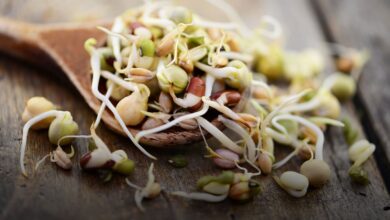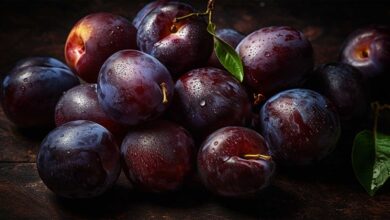In the past, herbal tea played an important role in preventing diseases and maintaining health. Not only did it have a “good reputation” (bona fama in Latin, which incorrectly translates to “good woman”), but it was also an opportunity to bring family or friends together over a hot drink.
In France, it is not customary to have a cup of tea, but rather to have a cup of coffee or herbal tea. Everyone knows and uses coffee for its stimulating properties, but far fewer people know about the many benefits of herbal tea.
Out of the rain shower, which relieves stress during the day and prepares the body to remove the aliments, the floor, with the help of medical plants, can prevent or remove the pets from it. Everyday life.
Briefly
- Herbal teas, made from various medicinal plants, can help prevent or treat everyday ailments such as digestive disorders, stress, and insomnia.
- It is important to choose high-quality plants and follow specific methods for preparing herbal tea in order to obtain maximum benefits;
- Herbal teas can also be used therapeutically for more specific conditions, such as coughs or flu, and can be part of a detoxification treatment.
Buy healthy herbal tea at the best prices
Amazon Affiliate Link. Prices mentioned in this article are indicative and subject to change.
The art of herbal tea
There are no complicated methods, but some simple principles are necessary to make the most of this encounter between you, water and plant:
Choose spring water with a low mineral content (dry residue at 180°C is less than 300 mg/L – this is indicated on water bottle labels), and if you use tap water, pour it out beforehand, especially in the morning, to get rid of any unwanted products.
In pharmacy, the term “simple” or “simple” drugs is used to describe any substance, usually of plant origin, used as it occurs in nature. Colloquially, we call the plants used in herbal teas “simple,” as the aromas and active ingredients are extracted from them without complex processing.
Daily use
Herbal tea consumption is not necessarily related to Therapeutic use. In some regions, we call “tea” a blend of local plantsTonic and stimulating effecttaken regularly during the day.
Large-flowered calamintha (Calamintha grandiflora), commonly known as “Aubrac tea”, has been known since ancient times for its physically and mentally stimulating properties.
There are also many “European teas”. Sage (Salvia officinalis) was known as a saving plant in the Middle Ages. In the ancient world and among the Arabs, it was associated with longevity and immortality. In the 10th century, the famous medical school of Salerno published a set of general rules of hygiene for daily use in the form of a poem. There we find the famous phrase: “Why should a man die who has a garden in which sage grows, except that there is no cure for the power of death?”
in addition to Tonic qualitiesWith its strong scent and slightly bitter taste, medicinal sage stimulates memory. Among its many other properties digestive, antiseptic And Fever repellent.
Therapeutic uses
Below are some common therapeutic uses for simple ailments in everyday life, knowing that a plant with a complex structure will correspond to several indications.
Digestive flora
Appetizer (Before eating): Its original meaning is “to stimulate the appetite.” Bitter plants prepare the stomach to receive food by stimulating gastric secretions even before they arrive, leading to irritation. Facilitates digestion. Examples include chicory, yellow gentian, and hops.
digestive (After meal): Green anise, fennel, dill, angelica, caraway. All of these plants from the Apiaceae family have carminative properties (they help expel intestinal gas) and facilitate the digestion process. Chamomile (Roman or German) can be taken as an aperitif due to its bitter taste, but is traditionally served as a digestif in the evening, as it has a slight aftertaste. Calming effect.
Marjoram (cultivated) or oregano (wild), lemon, mint, thyme, rosemary, savory and all aromatic plants belonging to the Lamiaceae family stimulate the secretions of internal organs (stomach, liver, gallbladder), bile, intestines, etc. ) It also has a disinfectant and Antispasmodic.
Licorice has a beneficial effect on stomach and ulcers, but in large doses and over a long period it can cause high blood pressure.
In short, aperitif plants act as a preventive measure and digestive plants as a therapeutic measure.
Soothing plants
The most traditional herbal tea for “good sleep”: lemon balm. It is ideal for people who suffer from anxiety and insomnia in particular Diuretic (Possibility of having to wake up at night) and diaphoretic: very useful in case of fever, especially in children (young people). Best used as a decoction.
Taking orange blossom infusion 30 minutes before bed helps you sleep and reduce daily stress. Lemon balm, which calms nervousness, anxiety, fixed thoughts, and nervous headaches, can be mixed with orange blossom to strengthen its effects.
Likewise, a mixture of two teaspoons of lemon balm leaves and one tablespoon of valerian root steeped for 10 minutes works to treat sleep disorders (insomnia) and difficulty sleeping.
In the mixture of lemon balm and chamomile, both plants have a calming effect, and their combination enhances these properties.
Hawthorn is used to prevent heart problems also in minor sleep disorders (of nervous origin) and stress.
Finally, St. John's Wort is an analgesic and antidepressant (for mild depression) but should not be used with certain medications.
Cough, flu, cold, cold
Some plants have a thoracic effect, they dilute secretions; Others fight the germs responsible for coughing, as it is an antiseptic. Finally others will have a soothing action.
Here is an interesting combination of 5 flowers: poppy (expectorant and sedative), violet (expectorant and sedative), white stock (expectorant and sedative), mallow (expectorant and sedative), marshmallow (expectorant and bronchial sedative), which we will talk about Add an antiseptic and fragrant plant: Wild thyme, which can be replaced with pine buds, to cleanse the bronchi and add flavor to the mixture.
In winter, elderflower herbal tea treats sore throats, colds, bronchitis and influenza.
Cleansing: a spring remedy
The goal is to detoxify the body by getting rid of toxins accumulated during the winter. Diuretic, laxative or stomachic plants are recommended. Choose a group of plants according to the weak point (kidneys, liver, intestines, skin). The treatment will continue for 3 weeks during which we take 3 to 4 cups daily, including one cup on an empty stomach and one in the evening before bed:
- burdock and wildflower (skin problems);
- Ash, burdock, nettle (antiseptic and remineralizing);
- Sweet, smoky woodcock (regulates bile secretions and liver function);
- Birch, borage (urinary tract and kidneys).
An aromatic plant can be added to these mixtures to improve the taste (sage, thyme, mint, licorice, anise, etc.) depending on the desired effect.
some advices
Organic quality, guaranteed by the “AB” mark, guarantees production without fertilisers, without pesticides and without the addition of artificial flavours.
You can buy them in bulk at an organic or health food store, a herbalist, or a pharmacy. The stems, leaves and flowers should retain their colour. The plant should “smell good.” A dried plant immersed in hot water should “come back to life.”
As for tea bags, they are very practical if you are in a hurry or if you are traveling, look at the composition and avoid tea bags that are not marked with a “natural” scent. Plants are well cut and cannot be kept for more than a year.
Cultivation or collection?
If you collect medicinal plants from the wild, take only the amount needed for an entire year's consumption. Get to know them as the ancients did and build a family pharmacy. Only choose plants you know well. Beware of “wild” but actually “fertilized” lawns.
If you have a garden, you can set up several patches of medicinal plants in the style of ancient druidic gardens, a patch of aromatic plants, a patch of wild plants whose seeds you can collect in the wild.
To the harvest
The roots are harvested outside the period of full vegetation. Leaves before flowers open; Flowering tops, at the beginning of flowering; Flowers in bud. The bark when the sap rises in the spring. The buds in spring are swollen with sap. Fruits and seeds when ripe.
To dry
In the open air and in the sun the fruits, roots and bark. In the shade, under a well-ventilated shelter, leaves, flowers or flowering tops. The goal is to preserve as many active ingredients in the plant as possible. To do this, the plant is dried in such a way that the water content decreases quickly to prevent fermentation and oxidation of the plant.
Memorizes
In a paper bag, cloth bag, or stone or glass bowl, in a dark, dry place; Not more than 2 years for leaves and flowers, 3 years for roots, seeds and bark.
Herbal tea: three techniques
Herbal tea is a drink with pleasant healing properties, the result of thousands of years of human experience that today allows us to treat our minor ailments and maintain good health. However, since the rapid development of chemical drugs, medical research has highlighted the incompatible interactions between the use of certain plants and the administration of these drugs. The question we should ask ourselves now is whether we should limit our use of plants or our use of medicines.
Infusion
Boil the water, then pour the boiling water over the plants, or immerse the plants in boiling water after turning off the heat.
Cover and wait 3 to 10 minutes to soften the tissue so that the water-soluble active ingredients disperse.
Use this technique with tender parts of plants (flowers, leaves, and flowering tops) or with denser tissue, as long as you take care to divide them well.
Boiled
Soak the plant in cold water. Bring the water to a boil over low heat.
Allow to boil for about ten minutes for the solid parts, and one or two boils for the seeds. This technique will be used for the hard or woody parts of plants: bark, sapwood, roots, and seeds.
Soaking
Soak the plant in cold water for several hours (less than 10 hours, as there is a risk of fermentation after that).
After filtering, you can cool the drink slightly (below 40°C).
This process is used when the active components of the plant are destroyed by heat: vitamin C or mucilage (as in the case of rose hips or mallow leaves).
(Tags for translation) The art of herbal tea
Enjoy the virtues of plants with herbal tea



نحن نحب سماع آرائكم!
شاركنا رأيك أو اطرح سؤالاً في قسم التعليقات أدناه